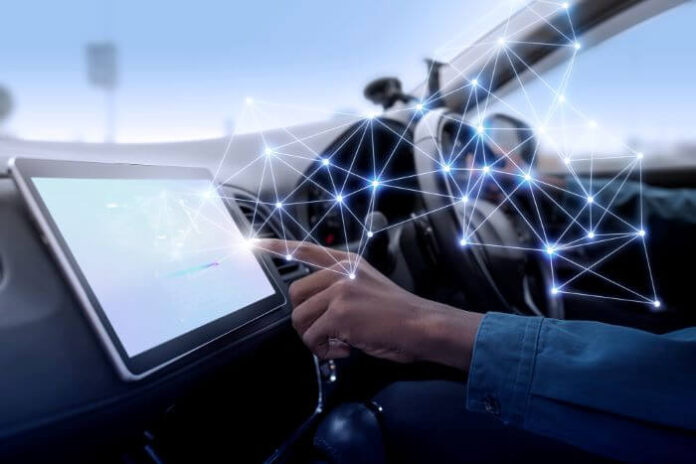In recent years, the automotive industry has witnessed a transformative shift in its approach to electric/electronic (E/E) architecture in software-defined vehicles (SDV). Zonal architecture systems have emerged as a revolutionary concept, offering a more efficient, scalable, and adaptable framework for integrating electronic and software components.
This article delves into the intricacies of zonal architecture systems in the automotive industry, exploring their principles, benefits, challenges, and the impact they are poised to have on the future of automotive technology.
Understanding Zonal Architecture Systems
Zonal architecture systems represent a departure from traditional E/E architectures by reimagining how electronic and software systems are organized and integrated within vehicles. Instead of the conventional approach of distributing numerous electronic control units (ECUs) throughout the vehicle, sdv zonal architecture systems consolidate functionalities into distinct zones, each managed by a dedicated zonal controller.
Key Components of Zonal Architecture Systems
Zonal Controllers: Zonal controllers serve as the backbone of zonal architecture systems, responsible for managing and coordinating the electronic and software functions within each zone. These controllers facilitate communication between various components, sensors, actuators, and subsystems within their respective zones.
Central Compute Units: Complementing the zonal controllers are central compute units, which oversee cross-domain functionalities and handle complex processing tasks that transcend individual zones. These units play a crucial role in enabling advanced features such as autonomous driving, connectivity, and vehicle-to-everything (V2X) communication.
Evolutionary Path: From Traditional to Zonal Architecture
Traditional E/E Architectures: Historically, automotive E/E architectures followed a decentralized model, with individual ECUs dedicated to specific functions such as powertrain control, chassis management, and infotainment. While effective initially, this approach became increasingly complex and cumbersome as vehicle features evolved and diversified.
Domain Centralized Architectures: Recognizing the limitations of traditional architectures, the automotive industry transitioned to domain centralized architectures. These architectures consolidated functionalities into domain-specific control units, offering improved integration and manageability. However, they still faced challenges in scalability and adaptability to rapidly changing technological landscapes.
Zonal Architecture Systems: Zonal architecture systems represent the culmination of this evolutionary trajectory, offering a holistic and modular approach to E/E architecture. By grouping related functions into zones and centralizing management and control, zonal architecture systems streamline development, enhance flexibility, and pave the way for future innovation.
Advantages of Zonal Architecture Systems
1. Simplified Integration and Development
Zonal architecture systems simplify the integration of electronic and software components, reducing complexity and development cycles. By standardizing interfaces and communication protocols within each zone, manufacturers can accelerate time-to-market for new vehicle features and functionalities.
2. Enhanced Scalability and Adaptability
The modular nature of zonal architecture systems enables greater scalability and adaptability to evolving technological requirements. As vehicle features and functionalities evolve, manufacturers can easily upgrade or expand individual zones without necessitating wholesale changes to the entire E/E architecture.
3. Improved Reliability and Performance
By reducing the number of ECUs and consolidating functionalities, zonal architecture systems enhance overall system reliability and performance. Centralized management and control ensure optimized resource utilization, minimized latency, and enhanced fault tolerance across the vehicle’s electronic and software systems.
4. Facilitated Over-the-Air (OTA) Updates
Zonal architecture systems streamline the process of delivering over-the-air (OTA) updates to vehicles, enabling manufacturers to deploy software patches, feature enhancements, and security fixes seamlessly. This capability enhances vehicle safety, cybersecurity, and user experience while minimizing downtime and service disruptions.
Challenges and Considerations
Interoperability and Compatibility: Ensuring interoperability and compatibility between different zones, components, and subsystems remains a key challenge for zonal architecture systems. Manufacturers must establish robust standards, protocols, and interfaces to facilitate seamless communication and integration across the entire E/E architecture.
Cybersecurity and Data Privacy: With increased connectivity and software complexity comes heightened cybersecurity and data privacy concerns. Zonal architecture systems must incorporate robust security measures, encryption protocols, and intrusion detection mechanisms to safeguard against cyber threats and unauthorized access.
Standardization and Industry Collaboration: Achieving widespread adoption of zonal architecture systems requires industry-wide standardization and collaboration. Manufacturers, suppliers, and regulatory bodies must work together to establish common frameworks, guidelines, and best practices for designing, implementing, and certifying zonal architecture systems.
Future Outlook and Implications
Zonal architecture systems are already revolutionizing the automotive industry with their more efficient, scalable, and future-proof approach to E/E architecture. As vehicle features and functionalities continue to evolve, zonal architecture systems will play a pivotal role in enabling advanced technologies such as autonomous driving, electrification, and connected mobility. By embracing the principles of modularity, centralization, and flexibility, manufacturers can unlock new opportunities for innovation, differentiation, and competitiveness in the rapidly evolving automotive landscape.







